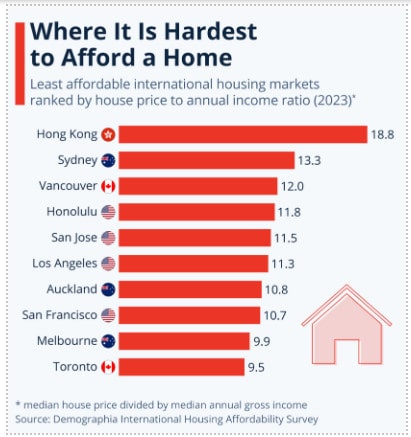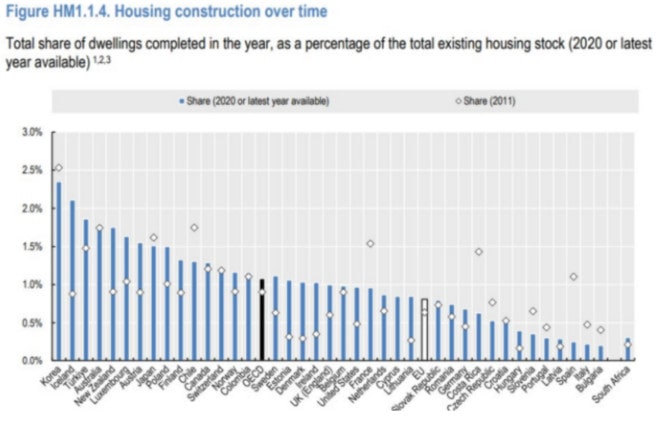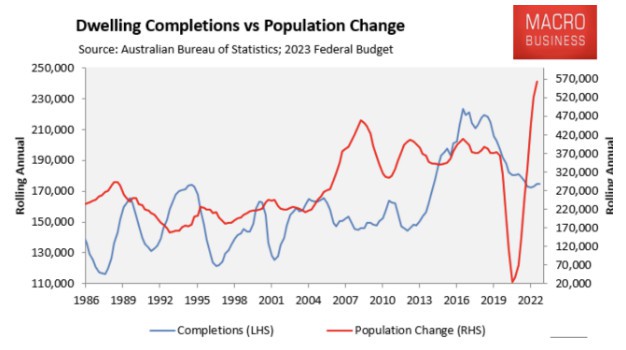- The first step is making the call.
- 1300 022 482
- hello@searchpartyproperty.com.au
YIMBYism: The Movement Trying to Transform Housing

Yes, it is a silly word, but “Yes-In-My-Backyard-ism”, represents some very serious housing ideas that are rapidly gaining support in Australia and around the world.
If you’re unfamiliar with the term, this article serves as a brief introduction to the movement and its beliefs. We’ll also look at what its popularity could mean for Australia, and what informed investors need to consider.
What is it?
YIMBYism is a housing affordability movement focussed on supply with an extremely pro-development stance. As one researcher put it, a ‘YIMBY’ is someone who wants to promote:
“…a new framing within the housing debate: concentrating on supply-side mechanisms, working with (not against) developers, and emphasising the rights of middle-class newcomers to wealthy cities.”
The movement was borne out of US cities like San Francisco, driven especially by younger millennials who have been priced out of the market by increasingly worsening affordability.
Crucially, much of the energy within the YIMBY movement comes from a perceived generational struggle against baby boomers and older generations of homeowners – those who bought early in life, rode the price explosion, and are now resistant to new developments in their area. This supply resistant, status-quo mindset is often deprecatingly termed ‘NIMBYism’ (Not-In-My-Backyard-ism), though the term has probably only helped to galvanise an opposing side to the dialectic.
Now, you might be wondering – how is this anything new? Calls for more affordable housing are hardly revolutionary. Certain politicians, non-profits and voters alike have long supported improved social housing and affordability-based policies like rent regulation and zoning reform.
What makes YIMBYism unique is its particular affinity for high-density housing, and a ‘build at any cost’ mindset. It’s an extreme approach that some critics have labelled the ‘latest frontier’ in gentrification, with YIMBYs having already supported new developments that actually ended up replacing existing, more affordable housing.
Another key tenet of YIMBY doctrine is ‘filtering’ – that any and all new dwellings are beneficial in addressing the problem of affordability, even if they are higher in price, since these dwellings will over time depreciate and ‘filter’ down. It’s an idea similar to trickle-down economics, where increasing the wealth of the rich is said to ultimately ‘trickle’ down throughout society and benefit everyone.
Today, YIMBYism has already become an established political movement around the globe. Non-profit YIMBY organisations exist throughout the United States, Canada, the United Kingdom, continental Europe, and now Australia. There are YIMBY organisations in Queensland, New South Wales, Victoria, Adelaide, Perth, and now even a national YIMBY body called the Abundant Housing Network.
Will it work?
Despite YIMBY’s recent emergence, the idea that removing barriers to new construction is an affordability panacea has rather rapidly taken hold. Our national cabinet is apparently also in agreement that planning reform is the key to solving supply and thus the housing crisis. Though the research concerning the effectiveness of filtering and ‘trickle-down’ housing is conclusive, the evidence is clear – Australia’s housing affordability problems are simply not driven by supply-side factors.
As an example of the YIMBY movement’s rapid rise and mobilisation, mid-last year, Sydney YIMBY held its inaugural meeting with speakers including former national and state MPs and local councillors. Former NSW Labor housing minister David Borger has also been assembling a team of universities, industry experts, big businesses, and other special interests to lobby for the rapid creation of new housing.
Consider the following:
Despite Australia having only five cities with a population over one million, two Australian cities rank in the top 10 for worst housing affordability in the world. Though not shown here, Adelaide also makes it into the top 15 with the 14th worst housing affordability:

This is despite Australia demonstrating one of the highest rates of new housing construction in the OECD:

And, the second highest rate of construction workers in the OECD, behind only New Zealand:

As we have continually discussed, the inescapable truth is that so long as immigration levels remain so recklessly high, Australian house prices will continue to rise:

Curiously, despite their stated goal, the YIMBY movement seems completely unwilling to mention immigration as even partially to blame.
What’s more, to take Vancouver as a case study, it looks like the ultimate outcome of YIMBYism could actually be higher house prices. According to research published by Professor Patrick Condon of the University of British Columbia, Vancouver experienced a tripling of housing units since 1960, as house prices quadrupled over the same period – faster than any other North American city, and Vancouver became the third most unaffordable city for housing in the world.
Perhaps even more worrying is the recent admission by NSW’s Building Commissioner, that:
“…there’s over 60 per cent nearly 70 per cent of developments and buildings that have defects out there that we don’t know about.”
It’s not hard to imagine why developers may be struggling to complete enough dwellings of adequate quality! Although, developers also seem to be the primary beneficiaries of any successful YIMBY movement – not those with aspirations of home ownership.
Overall, it seems the key takeaway for investors is that price growth is here to stay, YIMBY or NIMBY, so long as immigration remains out of the public discourse.
Want to discuss this further?
For expert guidance in property strategy, and what it could mean for you as a property investor, book in for a free consultation to make informed decisions, tailored to your investment goals. Don’t let affordability challenges hinder your success. Act now with Search Party Property!




